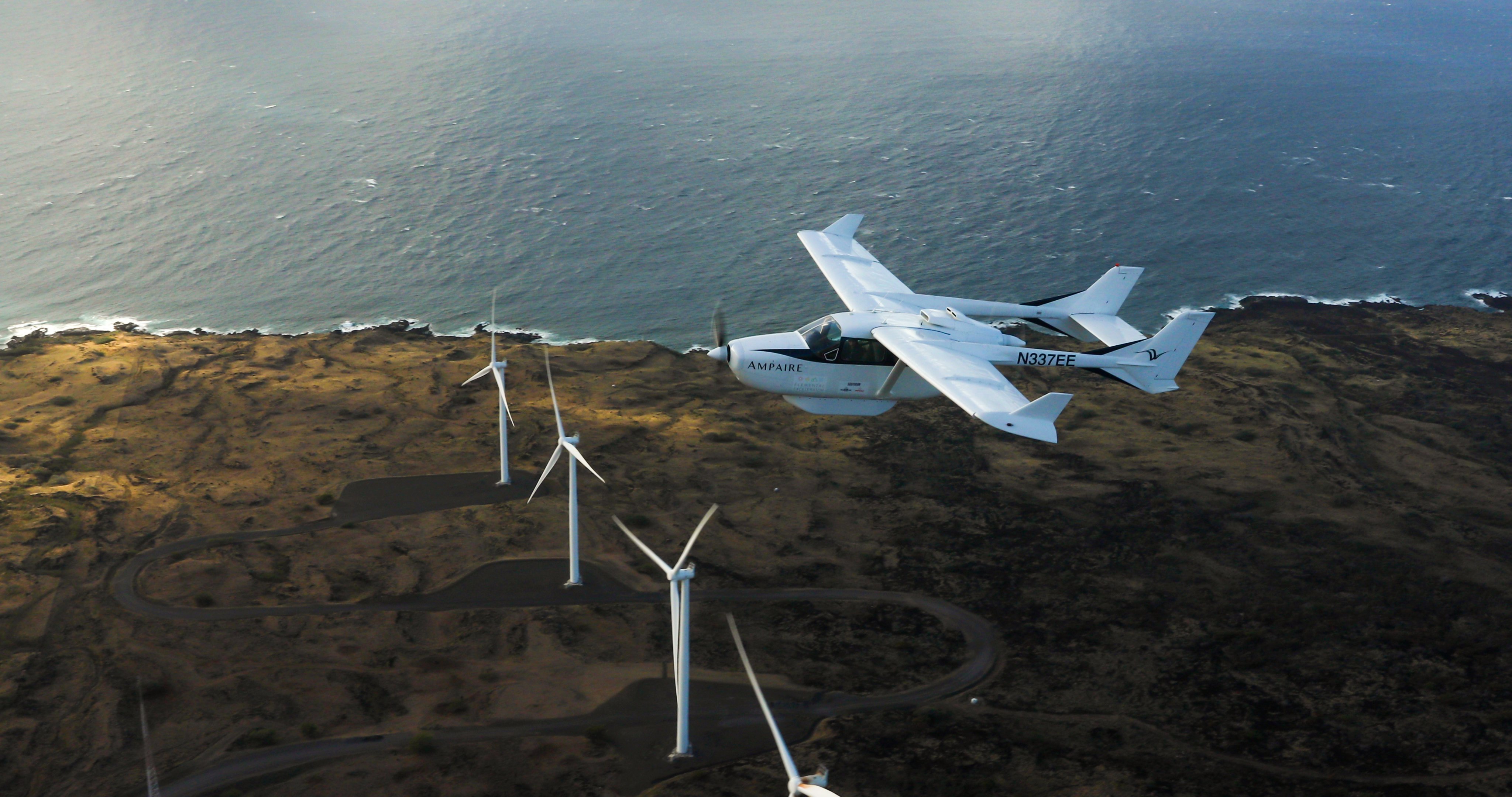Click Here to View This Page on Production Frontend
Click Here to Export Node Content
Click Here to View Printer-Friendly Version (Raw Backend)
Note: front-end display has links to styled print versions.
Content Node ID: 418882
With the successful conclusion of a month-long route test and reliability program in Hawaii for its five-seat, hybrid-electric powered EEL flying testbed, Ampaire is moving ahead with its next projects. “What we are focused on, rather than a single aircraft type is building a platform of technology that can be applied to a variety of planes,” company co-founder and CEO Kevin Noertker told the recent Vertical Flight Society Electric VTOL Symposium. “By taking this building block approach, we’re able to scale those same architectures into larger planes.”
The EEL, which is a retrofit of the Cessna 337 Skymaster, was intended to act as a technology demonstrator for the development of high-powered electronics, inverters, motors, and related systems. The California-based company which has received $30 million in funding since its inception in 2016, views it as a platform for developing scalable technology and certification processes, through a partnership with the U.S. Department of Energy’s Advanced Research Projects Agency (ARPA-E). “Some customers have expressed interest in operating the EEL commercially, and we recognize there is a meaningful niche for it as a product,” Noertker acknowledged.
Now Ampaire has plans to move into a larger weight class with the Eco Otter SX model, a modification of the DHC-6 Twin Otter currently in the preliminary design phase with design studies supported by NASA. “For the Eco Otter, we plan to upgrade both turboprop engines to a hybrid-electric propulsion system," Noertker told FutureFlight. “This differs from what we did on the Skymasters, where only one of the two engines was upgraded to electric.”
Ampaire, which received a $6.4 million research grant from NASA on the project, would not provide a timeframe for first flight, but expects it will have a passenger load of up to 19, or an equivalent cargo payload of 3,000 pounds. The company intends to scale up its power plant to the 600 kW level, which would put it on a par with the ubiquitous Pratt & Whitney PT6 turboprop in terms of energy output.
While the company conservatively puts the range at 200 miles, Noertker expects the aircraft, which would be certifiable under the FAA’s Part 23 category, to have much longer legs. Given its hybrid-electric power, Ampaire estimates the fuel savings will be in the double-digit range over the conventionally-powered Twin Otter. “You’re not getting the full fuel savings that you would in a fully electric aircraft, or even like a plug-in hybrid, but in a charge sustaining hybrid configuration you might get on the order of 20 percent fuel savings and higher depending on your operation,” said Noertker.
Other anticipated operating improvements for Ampaire's next project are noise: a 22-to-32 decibel reduction; emissions: 20-to-30 percent reduction; and since electric powertrains carry a high degree of reliability, a 25-to-50 percent decrease in maintenance costs. “We think that these are really meaningful first steps for the industry, that will take us onto the next generation of airplanes thereafter,” said Noertker.
Further down the road, the company has set its sights on an all-electric clean sheet private-type aircraft design it calls the Tailwind. While little information on the aircraft is available, it is believed it will be powered by a tail-mounted ducted fan rotor based on a NASA small business innovation research (SBIR) contract signed between Ampaire, Techsburg Engineering, and AVEC.
